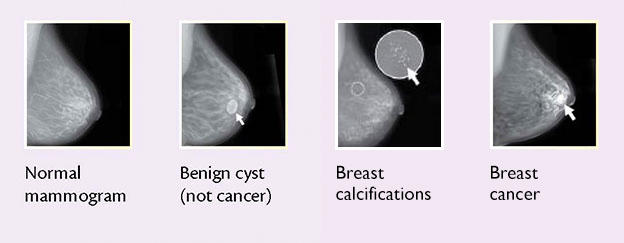Is a lump in your breast always cancer? 4 signs of breast cancer

Breast lumps have many causes – sometimes cancer, but often not. If you notice a change in your breasts, it's natural to feel a bit anxious.
First things first, schedule an appointment with your OB-GYN or primary care provider. It's best to get your concern checked out quickly by an expert.
In the meantime, breast cancer surgeon Juan Santamaria, MD, shares fact-checked information about normal versus cancerous lumps.
How cancerous lumps feel different
"Lumps in the breast aren't always cancer," says Dr. Santamaria. "About 10% to 20% of lumps are cancer. The rest are benign."
A doctor can determine the difference through a physical exam and a biopsy if necessary. "A physical exam can hint whether the lump is bad (malignant) or harmless (benign)," says Dr. Santamaria.
Signs of cancerous lumps:
- Rock hard
- Irregular borders
- Attached, or hard to move
Benign (harmless) lumps feel the opposite:
- Soft or rubbery
- Smooth borders
- Mobile, not fixed in one spot

Other signs of breast cancer
Other signs of breast cancer include:
- Nipple discharge – especially red, brown or rust-colored
- Other lumps nearby or in the armpit
- Lump eroding or growing through the skin, causing an open wound
- Bleeding or drainage from the lump
Breast cancer usually starts in the lobules and the ducts of the breast. If the cells become abnormal and multiply, the tissue can become cancerous.
Will lumps in the breast go away?
"Lumps can change in size – go up and down," says Dr. Santamaria. "A lot of women have lumpy, bumpy breasts and experience changes with their monthly cycle."
These changes with your period are usually not cancer. "Because of hormonal fluctuations, the lumps grow during the cycle and then deflate after the period is over. That's normal. The medical term for this is fibrocystic breast changes." The same condition can also come with breast heaviness, pain or swelling. There are many different manifestations of this condition – some women have a lot of cysts and growths.
Fibrocystic changes can affect women in their 20s to their 40s. Typically the lumps stop when the woman reaches menopause.
What could a painful lump in the breast mean?
"Cancerous lumps can be painful," says Dr. Santamaria. "But benign fibrocystic lumps, a fibroadenoma or a breast cyst typically hurt more than cancerous lumps."
A breast cyst is a fluid-filled sac. It's most common in premenopausal women. If the cyst is large or painful, your doctor can drain the fluid. It's not common for a breast cancer lump to contain fluid, but it is possible.
What to do if you find a breast lump
Tell your OB-GYN or primary care provider if you notice any change in your breasts – lumps, discharge or anything else.
"Listen to your body," says Dr. Santamaria. "We've seen breast cancer in 20-year-olds, so don't ignore it." Early detection means better outcomes: When breast cancer is caught early, the five-year survival rate is 99%.
Your provider may order a mammogram, ultrasound or both. If there's anything concerning found, you may need a biopsy.
3D mammograms can detect tiny changes
While self-breast exams are no longer recommended, mammograms are essential to women's health. Get your first mammogram when you turn 40, then every year after.
"If you have a family history of breast cancer, ask your doctor if you need to start screening at an earlier age," says Dr. Santamaria.
For the best screening possible, Nebraska Medicine provides 3D mammograms with computer-aided detection. While a traditional mammogram only takes four pictures, a 3D mammogram takes hundreds of pictures. "The machine combines all the layers of pictures together like a stack of pancakes," explains Dr. Santamaria.
The radiologist can examine a 3D visual of the entire breast, making it easier to detect tiny changes that could be cancer.
"3D mammograms can detect 30% more breast cancers than traditional mammograms," says Dr. Santamaria.
Call 800.922.0000 to schedule an appointment with a Nebraska Medicine OB-GYN.







